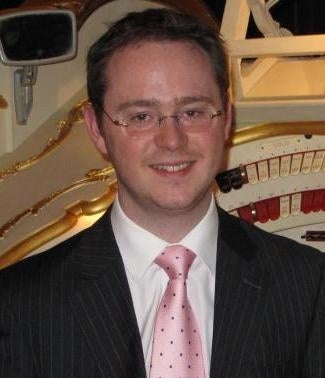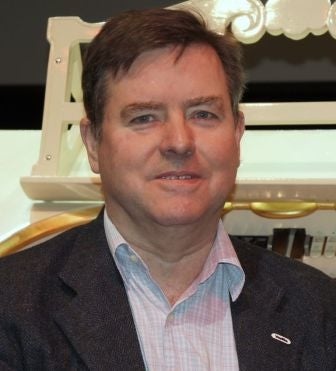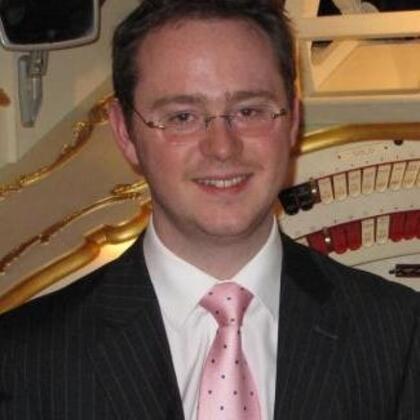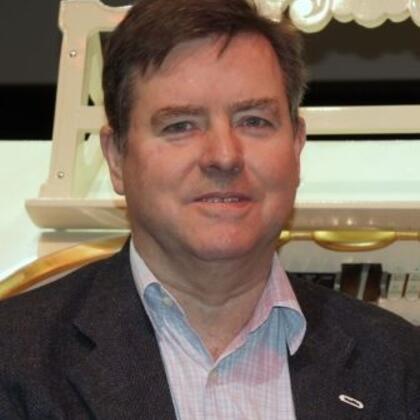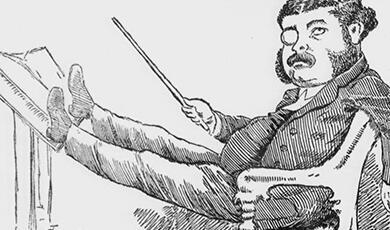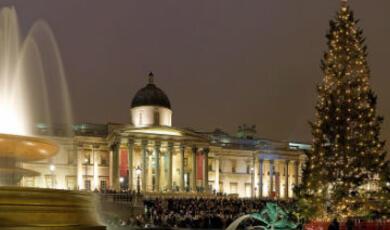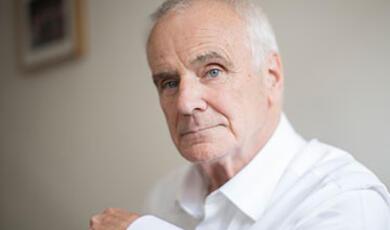From Trocadero to Troxy: A tradition returns
Share
- Details
- Text
- Audio
- Downloads
- Extra Reading
Eighty years ago, three enterprising sons of Russian immigrants realised their ambition, to build a palace of dreams on the Old Kent Road. Three years later they followed their dream with another magnificent picture palace, the Troxy on Commercial Road, Stepney.
On the way they collected Europe's largest Wurlitzer pipe organ and a virtuoso organist, a pupil of Max Reger, to play it.
Today, with the Trocadero but a distant memory and its mightiest of Wurlitzers languishing in store, we follow the fascinating history of the brothers, their cinemas, and today's ambitious project to install the Trocadero organ in the Troxy, thereby helping to re-create a 1930's cultural icon of the East End.
Download Text
9 June 2011
From Trocadero to Troxy:
A tradition returns
John Abson and Richard HILLS FRCO
Introduction (John Abson)
The Hyams family
Our story starts with three brothers - Phil, Sid and Mick Hyams. The eldest, Phil, started in the trade by working as a teenager in the new Popular cinema in the Commercial Road, Stepney. The new Popular was partly financed by the brothers' father, Hyam Hyams, a Russian immigrant and nephew of the founders of the well-known London chain of Grodzinski's bakeries. Phil was joined by his brother Sid and built up a small circuit that included the Canterbury in Westminster Bridge Road.
In 1927 the Hyams converted a vast tram shed into their first super cinema: the 2,700 seat Broadway at Stratford, east London. This was also the Hyams first contact with the Wurlitzer pipe organ; the Broadway was equipped with one of this country’s early examples and the experience no doubt inspired what today would be called ‘brand loyalty’, as this story tells.
Thanks to a versatile and gifted architect, George Coles, the Broadway auditorium looked palatial and Coles went on to design all the cinemas the Hyams initiated. Coles was credited with the designs for over 80 cinemas, including many for Oscar Deutsch’s Odeon chain.
In 1928, the Hyams sold their circuit to the newly formed Gaumont British combine, then started afresh as H&G Kinemas in partnership with Major A.J. Gale. One of their first ventures, in 1930, was the sumptuous Trocadero Elephant & Castle, followed by the Troc-ette in Bermondsey (in fact a take-over) and then in 1933 the Troxy in Commercial Road. We shall of course come back to both the Trocadero and the Troxy, but the strong connection between these theatres forms one of the most remarkable elements of this lecture.
The Hyams brothers were showmen to the core, and cared about their employees and their clientele. Quality was King. Their philosophy was "If you give 'em value for money, they'll come" and their cine-variety shows were legendary: not just two films, a newsreel and organ interlude, but huge variety bills featuring top artists of the day. "Mr Phil" and "Mr Sid" (as the Hyams were known to all) were unusually generous employers: at the end of a good week, staff would often find a bonus in their pay-packets.
Mindful his roots, Phil Hyams also took care of his community, and made the Troxy available for the annual prize-giving of the Redman’s Road Talmud Torah (primary school), of which his father had been president.
The cinemas also featured amateur talent contests. One night at the Trocadero, Phil went to the rescue of a hapless young singer who was being mercilessly barracked. He persuaded the audience to give her a chance, recalling another terrified novice who had received a fair hearing - Gracie Fields. His story was, he readily confessed off-stage, "a pack of lies".
Our story will continue with the fortunes of the Trocadero and the Troxy, but the Hyams brothers continued their cinema building career, and their record stands as the most notable super cinema developers in London.
They linked with Gaumont in 1935 to expand further, forming Gaumont Super cinemas. Brother Mick was on board as theatre controller. At Kilburn, they built the 4,004 seat Gaumont State in 1937, with modern skyscraper tower, vast auditorium and stage and, again, Wurlitzer pipe organ.
This was the Hyams' last great venture. With war imminent, they worried about their concentration of inner London properties and sold off projects at Holloway and Kingston-on-Thames.
The Blitz did indeed have a devastating effect. Audiences were scared to enter the Trocadero and State at the height of the bombing and they were closed for several weeks to save money. The Hyams sold out to Gaumont in 1944, just before the post-war boom in attendances made goldmines out of their huge theatres.
By the late 1970s, the Hyams were left with only the Biograph in Wilton Road, Victoria, an old fleapit which they had never been able to sell and which, in the spirit of P.T. Barnum, was inaccurately promoted as Britain's oldest operating cinema. This closed suddenly in 1983, to be demolished in days.
But both the State Kilburn and Troxy Stepney stand, as listed buildings and monuments to the taste and daring of Phil and his brothers. Fittingly, Phil Hyams celebrated his 100th birthday at a reception in Kilburn alongside the State, and died in 1997 at the ripe age of 102.
Denis Norden
Long before our patron Denis Norden became known for his TV and Radio work, he worked in cinemas. An interview with the Jewish Chronicle tells the tale.
“When [Denis] left City of London School (where author Kingsley Amis was a contemporary), he trained as a manager for the Hyams brothers, owners of such fabulous London picture palaces as the Gaumont State, Kilburn, and the Trocadero, Elephant and Castle, where double-features were augmented by live stage shows in stunningly opulent surroundings.
"The Hyams brothers - Mister Phil, Mister Mick and Mister Sid - were great innovators," Norden recalls. "In the war years, there was no television, no computers; people sat in their front rooms in the darkness of the blackout, with the Blitz raging outside. They went to the cinema in a mood quite different to today. At the time, the great majority of homes were not warm - it has become a cliché to recall waking up in the morning to find the glass of water on your bedside table frozen. But the cinemas were warm. Even the loos were luxurious, and the water, when you washed your hands, was hot!
"And the Hyams brothers didn't build their cinemas in the centre of town. I remember when I was assistant manager at the Trocadero, there were two local gangs, the Elephant Boys and the Elephant Heads. I replaced an assistant manager who'd had his face slashed. When I went to the Tube station to go home, I had an escort of commissionaires carrying wooden rollers from inside the roller towels. You can imagine what my parents thought of this...”
The Trocadero Years (Richard Hills)
Theatre’s Building and Opening
The Trocadero was built in just over six months on an important but somewhat difficult site adjacent to what is now the main Elephant and Castle roundabout. The theatre’s architect, George Coles, provided an ingenious scheme which took into account the bend in the railway line which to this day carves a corner off the site and provided some 3,500 seats along with two vestibules a cafe/restaurant and all the usual ‘mod-cons’ which 1930s patrons had come to expect.
The stage was, in fact, the largest outside the West End (at 28 feet deep) and the proscenium opening was 45 feet wide. Tony Moss wrote that interior was perhaps the best example of Italian Renaissance in a UK theatre. George Coles employed a similar scheme for the Gaumont State theatre in Kilburn (another Hyams enterprise) which still stands to this day although it was a somewhat simpler version of the Trocadero.
Reports tell us that the opening night, 22nd December 1930, was somewhat marred by a heavy fog, or smog, which crept into the auditorium – making it difficult even to see the film, but the programme was a great success featuring not only Europe’s largest Wurlitzer but also Alfred Van Dam and the resident Trocadero orchestra.
Quentin Maclean and the Wurlitzer
Recent documents have come to light which suggest that an organ just under half the size of that eventually ordered was intended to be installed in the roof of the theatre, above the proscenium arch. In what seems to have been almost an 11th hour decision, the largest Wurlitzer ever imported to Europe was substituted and ‘moved down’ to chambers either side of the proscenium arch. The installation was in shallow organ chambers covering the whole area between the proscenium and the front of the dress circle on either side of the theatre and must have been sensationally dynamic to 1930s ears.
Why the change? The general consensus is that the Hyams brothers were persuaded to opt for a larger instrument by Archie Parkhouse, then organist of the Hyams’ Metropole theatre in Victoria (the facade and foyer of which is now used by an ASK restaurant.) Parkhouse had been a demonstrator for Wurlitzer in the USA and his advice therefore came with a certain amount of ‘clout’. It was thought by his fellow organists that he was after the job of organist at the new theatre – perhaps this explains his interest in the project – and, according to Robin Richmond, who was a legendary theatre organ broadcaster and founding presenter of Radio 2’s The Organist Entertains, they all thought he was going to get it! Folk lore has it that when the time came the Hyams Brothers asked “Who is the best organist in England? We want him for our new theatre at the Elephant” to which someone replied “Maclean”! And that was that – they reputedly made him an offer he couldn’t refuse.
Maclean had until that time been organist at the Regal theatre in Marble Arch – a famous and historic theatre which stood until 1964 on the site of the current Odeon. At that theatre he played Europe’s largest theatre organ – a ‘Christie’ which he had helped to design himself. However, like many of his colleagues, Maclean had started with a classical training, only Maclean’s was more thorough than most.
Maclean, whose father Alick was one time conductor of the ‘New Queen’s Hall Light Orchestra’ and a highly respected musician in his own right, was sent to study the organ with Karl Straube in Leipzig and, at the same time, composition with Max Reger. He was interned in the Ruhleben camp for the duration of the First World War and, on his return to England after the cessation of hostilities, became assistant organist to Sir Richard Terry at Westminster Cathedral. He was lured away by the bright lights of the cinema, however, and toured as accompanist to the lecture film ‘With Allenby in Palestine’ before taking up appointments at the Grand Fulham, Globe Acton, Regent Brighton and the Pavilion Shepherd’s Bush – a building which still stands today, although modified internally. From there he went to Marble Arch.
Maclean was widely regarded as being the finest theatre organist in the country and, unusually, seems to have been universally liked by both the public and his peers. Leslie Barnard, in a 1937 article for The Radio Times wrote “Despite his academic training and powers as a straight organist, there is nothing of the intellectual snob about Quentin Maclean. A kindly personality with none of the pseudo-eccentricities that lesser men affect in the hope that they will be acclaimed as geniuses, has made him easily the most popular man in the cinema-organ world – he is admired and respected by everyone.”
From contemporary reports it is clear that Maclean was idolised by his colleagues and was supportive and encouraging to them in return.
One visitor to the Trocadero during the Maclean years wrote that he had never heard such applause in the theatre such as that given to Maclean’s regular interludes and that, unusually, while he was playing there was complete silence – a rarity indeed! A wonderful story was told by a former member of the Cinema Organ Society who remembered hearing one of Maclean’s interludes at the theatre where some people a few rows in front were talking. By all accounts a rough London docker turned round and said words to the effect of “Oi! Shut the hell up – Mac’s playing!”
Maclean remained at the Trocadero until 1939 when he took a Summer holiday in Canada. While he and his wife were at sea on the outbound crossing, war was declared. Being somewhat ‘stranded’ Maclean sought out work in Toronto, which was quick to be offered to him, and, following his wife’s sudden death during childbirth, he decided to remain, dying there on 9th July, 1962. At the first meeting of the Cinema Organ Society – held at the Trocadero – Douglas Badham read out a telegram he had received from Maclean that morning wishing them well in the new venture. It began “though separated by Unda Maris” (not only Latin for ‘waves of the sea’ but also the name of one of the more unusual stops on the Trocadero organ!) A touching sentiment.
War time and post-war
The Elephant and castle was in the centre of the target zone for German air raids on May 10th 1941 and suffered “raging fires” and large numbers of casualties. The theatre escaped serious harm but, understandably, the decimation of the population together with a reluctance to attend the theatre made the building impossible to operate successfully, and this (compounded by the trend away from cinema-going in the 1950s) in many ways sounded the death knell for the building.
During the Second War, the Trocadero organ was played by many notable and important cinema organists, including Bobby Pagan (who had moved over from the Troxy), Rudy Lewis and Terence Casey. Photographs from the post war years show that the console, along with the rest of the building, had suffered from the rages of time. It was filthy and in dire need of refurbishment. Ian Dalgleish, a great researcher and mine of information on theatres and organs recalls attending organ recitals at the Troc in the 1950s where the building was sticky under foot and smelled of urine. Yet, in spite of this, the building retained its grandeur and the organ’s workings were in good repair, if somewhat dirty. The organ was in regular use right up into the early 1960s and was broadcast frequently by many stars of the day. The final broadcast was given in November 1960 by BBC organist William Davies, who also gave the opening recital on the organ in its new home – what was then the South Bank Polytechnic in Borough Road – in 1979.
The Cinema Organ Society, having got wind of the theatre’s closure, successfully bid to purchase and save the organ thanks to a generous donation from a private individual and set about removing it during the winter of 1960. By February 1961 the organ had been removed except for the swell shutters (the louvres which let the sound from the chambers into the auditorium) which, owing to fire regulations, had to remain in place until the final closure of the theatre. Ironically this didn’t happen quite as soon as expected, and the building lumbered on for another two years amidst the building site that was the Elephant and Castle at that time. It finally closed its doors for good on October 19th, 1963 and was demolished quickly thereafter. The site is now occupied by the ‘Metro Central Heights’ complex – an iconic 1960s building formerly known as ‘Alexander Fleming House’. As such it is ironic that one iconic building was replaced by another.
Where East is Best (John Abson)
The Trocadero would be a hard act to follow, but in coining the catch-phrase “where East is Best”for their 1933 venture, the Hyams brothers hit the nail on the head.
Even in construction, the Troxy was splendid. The 110 foot main girder for the balcony, the largest single structural element in the building, was taken by road with special police escort from Barrow-in-Furness. On the roads of today that would be quite a feat, but in 1932 it was something of a major wonder. The statistics were equally prodigious with 2 ½ million bricks, 10, 000 tons of sand and 24,000 tons of ballast, 10,000 electric light bulbs and 90,000 yards of wiring going into the construction.
The Troxy was equipped to the highest order. Air conditioning plant pumped 216 tons of air per hour into the auditorium. The stage equipment included four revolving stages, an orchestra pit which could be raised to stage level and, to the left, a separate organ lift for the 10-rank Wurlitzer pipe organ console. A cafeteria and, most unusually, a basement waiting area for patrons were also provided for. Little surprise therefore that the total cost of the theatre was a colossal £250,000; by comparison the nearby Odeon in the Mile End Road, which seated 2,300 in comparison to the Troxy’s 3,500, cost a mere £49,000.
The Troxy opened on 11th September 1933 to the National Anthem, played by the band of His Majesty’s Scots Guards. The lengthy programme featured as its main film King Kong, starring Fay Wray. The theatre’s resident organist, Bobby Pagan, played the mighty Wurlitzer pipe organ.
Although situated away well away from the West End, the Troxy stood out as a beacon of entertainment in the surrounding areas of Limehouse and Stepney. So-called ‘cine variety’ - a mix of film and light entertainment – was the Troxy’s speciality. Two feature films, an organ recital and a stage show could all be enjoyed for 7d. The roll call of stars that played the Troxy was quite remarkable. Tommy Trinder, Charlie Drake, Petula Clarke, Larry Adler, Ted Ray, Vera Lynn, Gracie Fields, Sheila Sim, Cliff Richard, Louis Armstrong and many others graced the Troxy’s stage over the years. Visiting orchestras included those of Billy Cotton, Jack Hylton and Maurice Winnick.
In 1935, the Troxy presented the orchestras of Joseph Muscant and Van Dam, with Louis Mordish and Bobby Pagan at two pianos, and Quentin Maclean at the Wurlitzer. Less elegant but probably more amusing (to the patrons if not the stage crews) were the circuses that periodically visited the Troxy.
Wartime, coming a mere 6 years after the theatre’s opening, could well have been the Troxy’s undoing and indeed eventually and indirectly contributed to its demise as a cinema. Nonetheless, the Troxy’s survival epitomised the spirit that coped so admirably during those terrible years.
On the 7th September 1940, the Blitz began. Large areas of the East End were flattened, as indeed was an adjacent building to the Troxy. Initially, cinemas closed on government orders until their value in boosting wartime morale became recognised. At the Troxy, the number of stage shows reduced, to be replaced by organ interludes, recitals and slide shows.
The legendary manager of the Troxy, Maurice Cheepen, led wartime audiences in community singing. Cheepen was a born showman, and got up to many tricks to publicise his shows. Live vultures – fortunately caged, except for one which escaped; machines issuing fake dollar bills; ‘red indians’ on horseback; horse drawn pumpkin coaches were all part of his stock-in-trade.
Destruction of local housing meant that most of the local population had moved away. Although the Troxy continued with its fare of films, things were never the same and by the late 1950s had dropped to one third of its pre-war level. Domestic television had arrived. The vast Troxy became uneconomic to run, and the operators, by then the Rank Organisation, decided to close the building.
The final films, Hello London and The Siege of Sidney Street, were shown on the last night on 19th November, 1960, barely 27 years after the magnificent building opened to such fanfare. Had the Troxy closed today, in 2011, it would have been opened in 1984. We are used in the 21st century to rapid development, but it is still hard to register the seismic nature of social change that so dramatically reversed the Troxy’s fortunes, in the middle of the 20th century.
What might have been the final indignity was the removal of the Wurlitzer pipe organ. A well-specified instrument, it was (somewhat in contrast to the lavish appointments of the Troxy) rather undersized for the building. The instrument was sold and broken up for parts, but as much of it survives now in other instruments, its spirit lives on.
Covent Garden in Stepney – the London Opera Centre
The Troxy had lain dark since its closure as a cinema in 1960. One can speculate on the likely fate of such a building at that time, but there is little doubt that the wartime depredations suffered by the area lingered on, to an unusual extent. Demolition and re-development were probably not far from the owners’minds, a sad end for a major building not yet thirty years old.
Instead, an unlikely and unexpected saviour emerged, in the somewhat unexpected form of the Arts Council of Great Britain. In 1963, the Troxy’s original architects, George Coles, produced a conversion scheme for the Troxy to operate as the London Opera Centre. Operated out of the Royal Opera House Covent Garden, the Centre’s purpose was to provide a combined resource for voice students, stage management, technical and set-building training, as well as providing a space for student performances.
And, indeed, what a space it was! Coles’conversion extended the stage floor outwards, level across the existing stalls to a line directly under the front of the balcony. The gave a performance space said to be the largest in the country, 100 feet wide by 100 feet deep with a 60 foot height. A separate lecture theatre was created upstairs at the rear of the capacious circle, still leaving 600 seats for audiences for performances in the main auditorium. The vast stalls area underneath the circle was walled off and retained for scene painting, being large enough to easily lay out full scenery cloths for the Royal Opera House.
Talent continued to pass through the Troxy in its new guise, perhaps one of the most well-known today being Dame Kiri te Kanawe who, in a recent BBC interview, recalled her years there in the 1960s with evident pleasure.
The London Opera Centre continued at the Troxy until 1978, when the lease came up for renewal and the decision was taken to set up the National Opera Studio at Covent Garden, rather than continue at the Troxy.
Bingo had been the usual salvation of under-performing cinemas from the 1960s, when the game started to booming. Under-patronised halls were converted to accommodate the game, in whole or in part (‘cine-bingo’). This time, the Mecca organisation took over the operations of the Troxy. The level stalls floor installed for the London Opera Centre, needed also for bingo, was no doubt a clincher and made for an economical conversion. Many cinema-to-bingo conversions paid scant regard to the historicity of the interiors, but Mecca were regarded as showing respect as indeed they did at the Troxy. Perhaps the greatest loss was the horizontal division of the loft entrance foyer, but the main interior of the auditorium was largely untouched other than the provision of stairways at each end of the circle, to enable the winners seated upstairs to have their cards speedily verified and be united with their ‘lucky prizes’. Much of the additional work was, creditably, carried out with due regard to the original designs, Ironically however, even Mecca’s less authentic additions and alterations are also protected by the Grade 2 listing bestowed on the building in 1991.
From Trocadero to Troxy – New dreams for old (John Abson)
The South Bank Years
We have covered the removal of the Trocadero Wurlitzer from its original and magnificent home, but its removal solved only one problem to present many more.
Geoff Osman and the Cinema Organ Society were faced with an unusual task in the early 1960’s – a heap of organ parts and nowhere to put them. With typical fortitude Geoff pushed on regardless and engaged a volunteer army to start cleaning, re-leathering and generally restoring the myriad of organ components.
The general view in the Society was that the organ should remain close to its original home and agreement was reached with the then Borough Polytechnic to install the Wurlitzer in the Edric Hall. Capable of accommodating around 250 people, the Hall was about one-seventh of the size of the Trocadero. Chambers were created at one end of the hall and during the 1970’s the Wurlitzer took shape, again under the leadership and drive of the indefatigable Geoff.
The Wurlitzer was re-opened in 1979 by the BBC’s William Davies, who had played at the closing of the Trocadero as well as on an earlier pioneer stereo radio broadcast from the theatre.
The re-opening represented the beginnings of a renaissance for the organ and during the 1980’s further work on the instrument brought it to a high point, musically. Although speaking into a small room, the instrument had character and was enjoyable to the listener. Organists not only from the UK but also America and Australia travelled to give concerts and it regained its deserved reputation as one of the world’s finest.
In 2003 came the news from the London South Bank University (successors to the Borough Polytechnic) that Edric Hall was to be remodelled as an arts centre. After considerable discussion and various proposals and counter-proposals, it was amicably agreed that the Wurlitzer had no future in the new scheme. Plans were once again laid and the Wurlitzer dismantled in the late spring of 2004 and removed to store.
The Trocadero Wurlitzer had played for 25 happy years at the Edric Hall, only 6 less than at the Trocadero. Despite the rather modest surroundings, it was one of the flagship theatre organ venues in the UK, used for concerts, recordings and not least the teaching of theatre organists. More than one major international theatre organ star cut their teeth on this instrument and used it as a launch pad for their careers. Quentin Maclean would, surely, approve.
T2T: Trocadero to Troxy
Finding a home for a large theatre pipe organ is no easy task. The Biblical phrase "Many are called but few are chosen" was never more true, though in this case perhaps in a different context.
Over 70 potential locations were identified and scrutinised, not only for the technical feasibility of installing the organ, but also for the acoustics, the suitability of the building and its environment and not least the commitment of the location owners to act as partners in a venture that would involve major changes to their property. Last and not least, the Trocadero Wurlitzer would have to be available for public enjoyment, practice and use.
Although several came close, it was the Troxy Stepney that won the day after five years of searching and in a way that few dared dream.
The building provides the perfect acoustic match for the instrument. It has organ chambers, left over from its original long-departed Wurlitzer, easing the installation of the replacement (yet much larger) instrument.
The venue provides high quality music, entertainment and conference facilities. Not least, the owners demonstrate positive enthusiasm and support for the project and by one of those uncanny twists of fate, the Trocadero was a sister cinema to the Troxy.
T2T, 'Trocadero to Troxy", was born.
Very significantly, it would be the first installation of a major theatre pipe organ in a British super cinema since the 1930's.
Once the scale of the task of providing organ chambers, refurbishing and installing the instrument became known, the Cinema Organ Society set about considering ways of funding the project.
A reinstallation fund had already been set up when the organ was removed from its previous home at the London South Bank University and through intensive fundraising efforts; the fund now stands at around £164,000. Sources have included grants, bequests and not least personal donations from a very supportive and generous public.
The project budget indicates that a further £85,000 needs to be raised to complete the project. To facilitate fundraising, and recognising the advantages of charitable status, a decision was taken in 2010 to set up a charitable trust to give the most beneficial and focussed approach to closing this gap.
Hence the Trocadero Wurlitzer Trust was set up, and the project started in earnest.
The T2T Project
By any measure this is an ambitious project, all the more so when conceived and carried out by amateurs. The Trocadero Wurlitzer pipework, two and a half times greater in number than that of the original Troxy Wurlitzer, will be installed in chambers on either side of the stage.
On the left, the original Troxy organ chambers will be used. On the right an existing void will be converted to a third chamber. The existence of the void is something of a mystery, and may have been originally left by the architects in order to accommodate the much larger instrument that such a big theatre would have normally contained.
Of outstanding significance is the installation of this large instrument on either side of the stage proscenium. This will give a breadth and richness of sound that is, with one notable example, unobtainable in this country. It will also be similar to the organ’s original layout in the Trocadero where it was also divided.
All this will entail significant construction work in a building which is in near-continuous public use. That alone is a planning challenge.
Once the chambers are prepared, which we expect to complete by the end of 2011, the organ components will be installed.
Swell shutters, to provide expression. Two blowers, to provide air (or ‘wind’) at pressure to sound the pipes. Regulators, with control valves to assure a constant pressure of the wind supply to the pipes. Trunking – pipework to carry wind around the instrument. Windchests, with complex electro-pneumatic valve actions to control the flow of the wind to the pipes as the organist presses the keys. Tremulants, to provide the unmistakeable ‘wobble’ characteristic of the theatre organ. Tuned percussions – Glockenspiels, Vibraphones, Xylophones, Marimbas, Cathedral Chimes, Sleigh Bells. Untuned percussions and effects – drums, cymbals, tambourines, triangles, train whistles, bird whistles, all to recreate the original purpose of the theatre organ, to be a one-man (or ‘unit’) orchestra in the days when high technology consisted of cotton-covered wire, polished brass and electro-magnets.
And when all this is done, the organ pipes themselves will be placed on the windchests. Trumpets and Tubas, Post Horns, Tibias, Violes, Gambas, Flutes, Oboes, Saxophones, Clarinets, Kinuras, Diaphones and Diapasons. Just about every orchestral sound there could be, from one of the most romantic musical menus one can imagine.
Finally comes the painstaking fine adjustment – regulation – of the pipework to balance it to the characteristics of the auditorium.
The project has reached an exciting stage. The magnificent 4-manual console, fully restored 10 years ago, is already in place in the auditorium in a specially constructed enclosure. We have used this to demonstrate publically our commitment and progress in the project, and an Open Day in April this year attracted 300 people – not bad for an organ that doesn’t yet play!
When completed, we will have significantly enhanced an existing Grade 2 listed building by restoring an original feature. In doing so we will have made the first installation since the 1930s of a major theatre organ in a large super-cinema. We will have restored to playing condition an historic and famous musical instrument. We will, through our agreement with the Troxy, be able to present to the public major musical events featuring the Trocadero Wurlitzer. Solo performances, silent film presentations, combined events with soloists, bands and orchestras are on our agenda. We will continue with our existing efforts to provide tuition and practice opportunities for organists. We will encourage young organists through our Ian Sutherland memorial awards. All this will be against the backdrop of the Troxy’s daily operations, where we will have the opportunity to bring the Wurlitzer to a contemporary public. We think this is not only worthwhile, but worth the effort.
Help us get there
We continue with our efforts to raise funds. Recognition by the Charity Commissioners that our project gives public benefit is both a morale booster and a source of practical encouragement.
Against the backdrop of a tightening economy, we have in the last 9 months raised approximately £65,000, mainly though not exclusively through private donations. We need another £85,000 to meet our project budget of £250,000, and are carefully balancing volunteer effort with professional work (for example building work) to husband resources.
Should you too feel that this project is worthwhile, please visit our website to see how you might help.
Thanks
We would like to acknowledge the following support and assistance in this lecture:
Allen Eyles (history of the Hyams family)
David Jones (information on the Troxy cinema)
Jewish Chronicle (interview with Denis Norden)
Jim Buckland, Tower Hamlets Local History Library and Archive, Nigel Laflin, David Reed (photographs)©John Abson and Richard Hills, Gresham College 2011
Part of:
This event was on Thu, 09 Jun 2011
Support Gresham
Gresham College has offered an outstanding education to the public free of charge for over 400 years. Today, Gresham College plays an important role in fostering a love of learning and a greater understanding of ourselves and the world around us. Your donation will help to widen our reach and to broaden our audience, allowing more people to benefit from a high-quality education from some of the brightest minds.


 Login
Login
